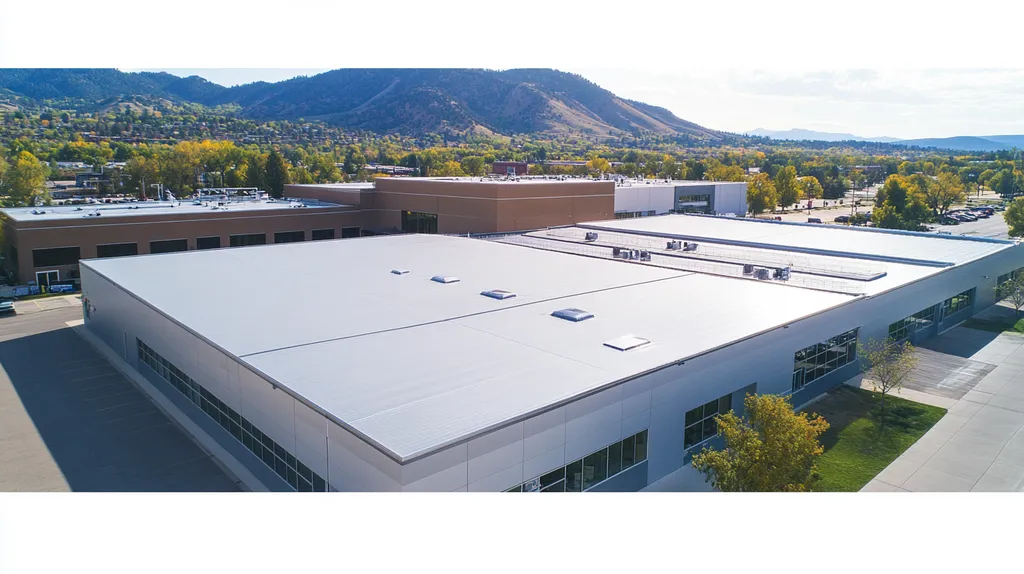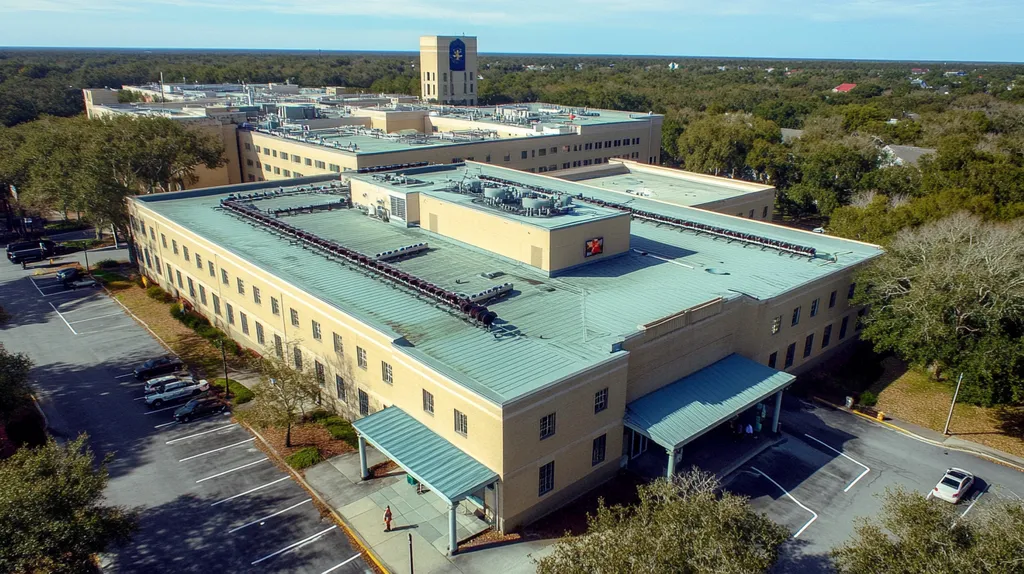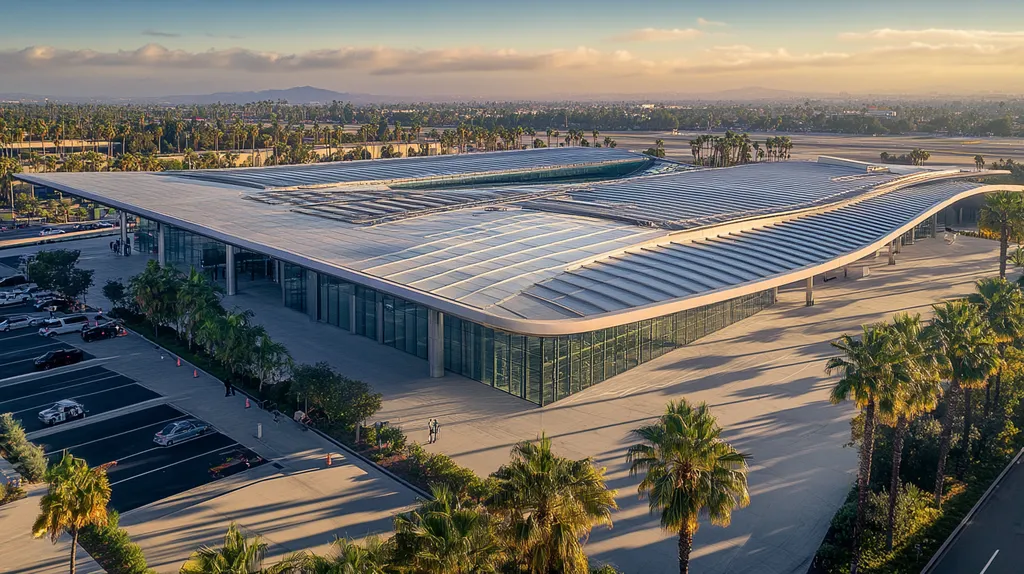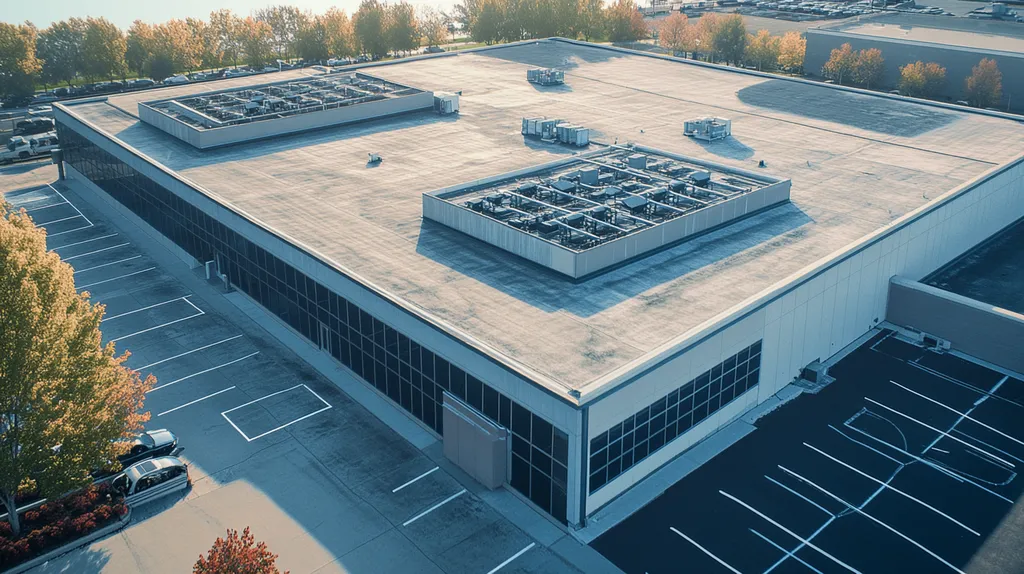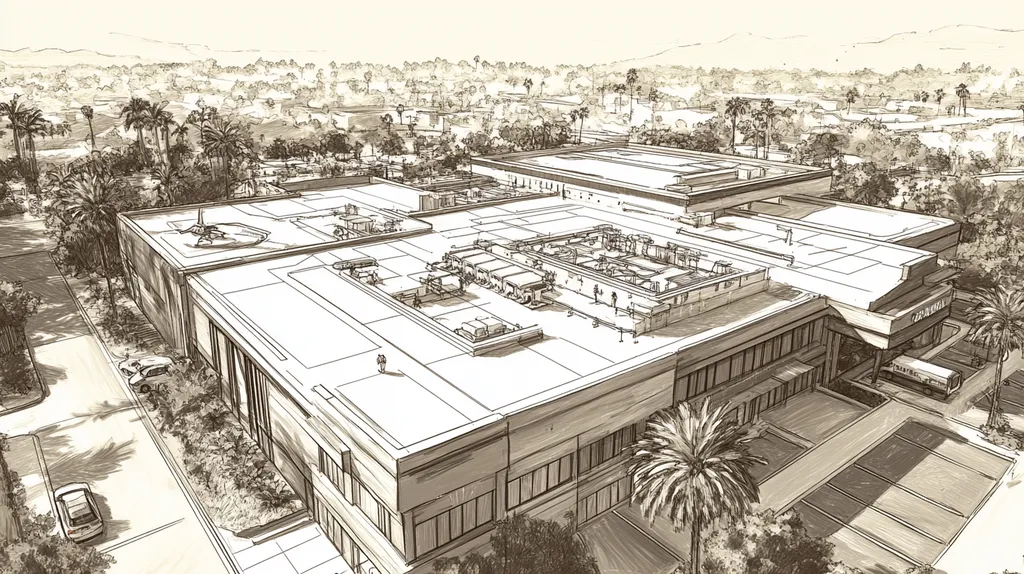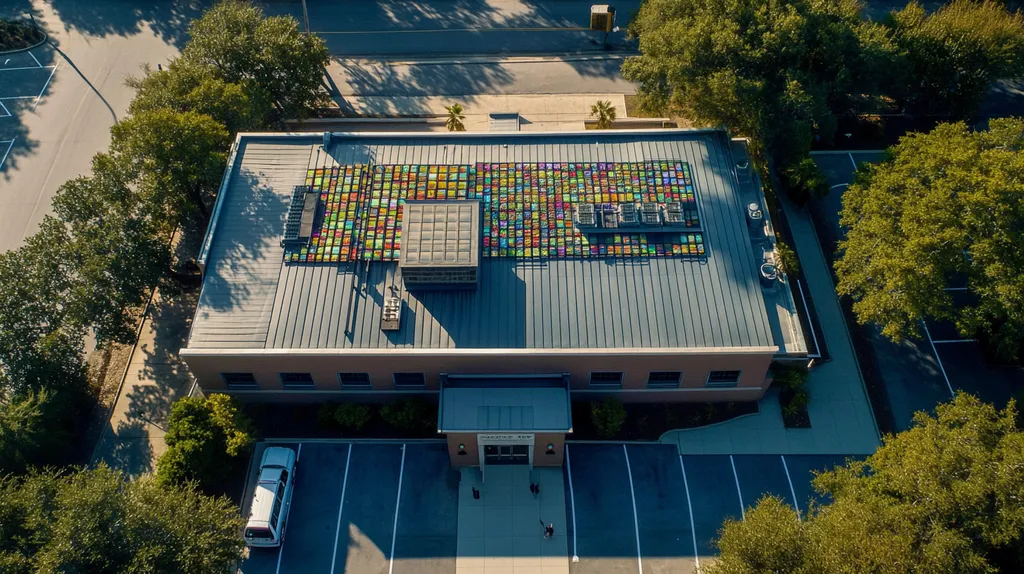Industrial roofing failures cost U.S. businesses over $3.5 billion annually, with 40% of these catastrophic incidents traced directly to unqualified contractors. Despite these statistics, dangerous myths about contractor certification requirements continue to circulate among facility managers.
From misunderstood insurance requirements to dangerous assumptions about licensing standards, these misconceptions put valuable properties at risk. Understanding the reality of industrial roofing certifications has become critical for protecting facilities and avoiding costly liability exposure.
This comprehensive guide examines common certification myths, their practical implications, and evidence-based solutions for property managers seeking qualified contractors.
SECTION 1: COMMON MISCONCEPTIONS
Each year, industrial roofing failures cost businesses millions in repairs, equipment damage, and operational disruptions. Recent data shows that over 40% of these failures stem from improper installation by unqualified contractors. Understanding certification requirements, insurance obligations, and contractor qualifications isn’t just about compliance – it’s about protecting valuable assets and ensuring business continuity. Let’s examine the most dangerous misconceptions that put properties at risk.
Misunderstood Certification Requirements
The NRCA PROCertification program stands as the definitive standard for roof installation quality, validating that contractors possess both the essential skills and hands-on experience needed for proper installations. (source: National Roofing Contractors Association)
Many facility managers wrongly assume that manufacturer certifications alone guarantee quality work. However, these certifications typically only verify product knowledge, not installation expertise or safety protocols.
State and local requirements add another layer of complexity. While some jurisdictions mandate specific certifications, others have minimal oversight. This variation often leads to confusion about which credentials truly matter.
The consequences of hiring uncertified contractors extend beyond immediate quality concerns. Building insurance policies may become void if work is performed by unqualified contractors, leaving owners exposed to significant financial risk.
Insurance and Liability Myths
A common misconception is that standard liability insurance covers all potential roofing mishaps. In reality, specific endorsements for height work, hot work, and specialized equipment are often required but frequently overlooked.
Property managers often misunderstand their liability exposure when contractors lack proper coverage. Even with signed waivers, building owners can face substantial legal and financial consequences for accidents involving inadequately insured contractors.
The distinction between occurrence-based and claims-made policies creates another risk area. Many facility managers don’t realize that claims-made policies may leave them vulnerable to future issues long after project completion.
Insurance requirements should match project scope and risk level. High-value industrial properties require higher coverage limits, yet many managers accept standard minimums without considering their specific needs.
Perceived Benefits of Unlicensed Contractors
The apparent cost savings from hiring unlicensed contractors often prove illusory. While initial bids may be lower, these contractors typically lack access to wholesale material pricing and quality suppliers, ultimately increasing total project costs.
Warranty protection becomes compromised when using unlicensed contractors. Manufacturers frequently void material warranties when installations aren’t performed by authorized contractors, leaving owners without recourse for defective products.
Building code compliance presents another hidden risk. Unlicensed contractors may lack current knowledge of local requirements, leading to failed inspections and costly remediation work.
Emergency response capabilities also suffer with unlicensed contractors. During critical situations like storm damage, these contractors often lack the resources and industry connections needed for rapid response and temporary repairs.
SECTION 2: PRACTICAL IMPLICATIONS
The stakes for industrial roofing have never been higher, with facility downtime from roof failures costing businesses an average of $5,000 per hour. Beyond immediate repair costs, improper installations create cascading effects that compromise structural integrity, worker safety, and operational continuity. Understanding the real-world implications of contractor certification helps facility managers make decisions that protect both their buildings and bottom lines.
Impact on Roofing Quality and Safety
Industrial roofing systems require precise installation techniques that directly affect building performance. Even minor deviations from manufacturer specifications can compromise the entire system, leading to premature failure and unsafe conditions.
Certified contractors undergo rigorous training in fall protection, equipment operation, and material handling. This expertise translates into safer work environments during installation and maintenance, reducing liability exposure for property owners.
Modern industrial roofs integrate complex components like vapor barriers, insulation systems, and drainage networks. Only properly trained contractors can ensure these elements work together effectively to protect the building envelope.
Quality control processes used by certified contractors include detailed documentation, progress inspections, and post-installation verification. These systematic approaches prevent costly shortcuts and ensure long-term performance.
Compliance with Building Codes
Building codes for industrial roofs have become increasingly complex, incorporating stringent requirements for fire safety, wind resistance, and energy efficiency. A qualifying contractor must demonstrate mastery of these requirements through state-mandated examinations and ongoing education. (source: Illinois Department of Financial and Professional Regulation)
Code compliance extends beyond initial installation to include proper documentation and permit processes. Certified contractors maintain current knowledge of local requirements and ensure all necessary approvals are secured.
Regular code updates demand continuous learning and adaptation. Professional contractors invest in staying current with changing regulations to protect their clients from compliance issues.
Enforcement of building codes has intensified, with authorities conducting more frequent inspections and imposing stricter penalties. Working with certified contractors helps avoid costly violations and project delays.
Cost of Non-Compliance Issues
The financial impact of non-compliance typically emerges long after project completion. What begins as minor installation defects often develops into major structural issues requiring extensive repairs.
Insurance carriers increasingly scrutinize contractor credentials when processing claims. Work performed by uncertified contractors may void coverage, leaving property owners fully exposed to damages.
Non-compliant installations often trigger a chain reaction of problems. Water infiltration can damage expensive equipment, compromise inventory, and create hazardous working conditions that lead to liability claims.
The true cost multiplies when considering business interruption, emergency repairs, and potential regulatory fines. These combined expenses frequently exceed any initial savings from hiring uncertified contractors.
SECTION 3: COST OF MISINFORMATION
The financial impact of roofing certification misinformation has reached critical levels, with property owners facing unprecedented risks. Recent industry data shows that facilities choosing uncertified contractors face repair costs averaging $275,000 within the first five years – nearly triple the cost of proper installation. This stark reality extends beyond immediate financial consequences to include legal liability, regulatory compliance, and long-term maintenance implications.
Financial Risks of Misinformation
The NRCA PROCertification program stands as the definitive measure of installation quality, validating that contractors possess both technical expertise and hands-on experience. Choosing contractors without this crucial certification often leads to catastrophic system failures and voided warranties. (source: National Roofing Contractors Association)
Initial cost savings from selecting uncertified contractors typically evaporate within 18-24 months. These contractors often lack access to premium materials and may cut corners during installation, leading to premature system failure.
Emergency repairs stemming from improper installation frequently cost 400% more than standard maintenance. These unplanned expenses can devastate facility budgets and force difficult choices between temporary patches and complete replacement.
Insurance carriers increasingly reject claims related to work performed by uncertified contractors. This leaves property owners fully exposed to damages, often reaching millions in repair costs and business interruption losses.
Legal Consequences of Non-Compliance
Building code violations from uncertified installations trigger cascading legal issues. Local authorities can impose daily fines until violations are corrected, while tenants may pursue legal action for business disruption.
Property insurance policies frequently contain clauses requiring certified contractor installation. Violations of these requirements can void coverage entirely, creating substantial liability exposure.
Worker compensation claims pose another significant risk when using uncertified contractors. Property owners often face secondary liability for workplace injuries, even with signed waivers in place.
Documentation requirements become particularly challenging with uncertified contractors. The absence of proper permits, inspection records, and warranty documentation can compromise legal defense positions.
Long-Term Maintenance Costs
Maintenance expenses for improperly installed roofs typically exceed original installation costs within three years. These ongoing repairs create a constant drain on operational budgets while failing to address underlying installation defects.
Energy efficiency suffers dramatically with poor installation, increasing utility costs by up to 40%. Improper insulation placement and inadequate sealing lead to significant thermal losses that compound over time.
Equipment damage from water infiltration represents another hidden cost. Leaked water can destroy expensive HVAC systems and production equipment, leading to substantial replacement expenses.
The cumulative impact of these maintenance issues often forces premature roof replacement. This creates an accelerated replacement cycle that can double or triple lifetime system costs.
SECTION 4: REALITY CHECK
The industrial roofing sector faces a critical challenge with contractor qualifications, as recent studies show that 40% of commercial roof failures stem from improper installation. Property managers must navigate a complex landscape of certifications, licenses, and state-specific requirements. With repair costs averaging $12 per square foot for premature failures, understanding the reality of contractor qualifications has become essential for protecting both facilities and budgets.
Industry Standards for Certification
Certification standards in industrial roofing reflect a comprehensive approach to quality assurance. Major manufacturers require specific training programs and hands-on experience before granting certification status to contractors.
Technical proficiency forms only part of the certification equation. Contractors must demonstrate expertise in project management, safety protocols, and proper documentation to maintain their certified status.
Quality control processes represent a key differentiator between certified and non-certified contractors. Certified professionals follow established inspection protocols and maintain detailed records throughout installation.
Material warranties typically require installation by certified contractors. This requirement ensures proper handling and application while providing building owners with comprehensive system coverage.
Benefits of Licensed Contractors
Licensed contractors bring verified expertise and accountability to industrial roofing projects. Their credentials reflect completion of rigorous training programs and ongoing education requirements.
Insurance coverage becomes more comprehensive with licensed contractors. Their policies typically include specific riders for height work, hot work, and specialized equipment operation.
Project documentation from licensed contractors meets higher standards. This includes detailed specifications, progress reports, and final inspection certificates that protect property owners.
Emergency response capabilities improve significantly with licensed contractors. Their established supplier relationships and trained crews enable rapid deployment during critical situations.
State-Specific Licensing Variations
Licensing requirements vary significantly across jurisdictions, creating potential confusion for property managers. Some states mandate specific credentials while others rely on local regulations.
Texas exemplifies the complexity of regional requirements, where roofing contractors can pursue different levels of licensure through RCAT depending on their scope of work. Each license type requires passing specialized exams and maintaining proper insurance coverage. (source: GetJobber Academy)
Local building codes often interact with licensing requirements. Contractors must demonstrate familiarity with area-specific regulations to maintain their credentials.
Multi-state operations require careful attention to varying standards. Contractors working across state lines must maintain appropriate licenses for each jurisdiction where they operate.
SECTION 5: EVIDENCE-BASED ALTERNATIVES
Industrial roofing failures cost businesses over $2 billion annually in repairs and operational disruptions. The key to preventing these costly incidents lies in understanding and implementing proper contractor certification protocols. With increasing complexity in roofing systems and heightened regulatory oversight, facility managers must navigate certification requirements strategically to protect their investments and ensure long-term building integrity.
Achieving Certification Through RCAT
The NRCA PROCertification program sets the definitive standard for roof installation quality, requiring contractors to demonstrate both technical mastery and field experience through rigorous assessment protocols. (source: National Roofing Contractors Association)
Certification pathways involve comprehensive testing across multiple domains including safety protocols, material specifications, and installation techniques. This multi-faceted approach ensures contractors possess both theoretical knowledge and practical skills.
Documentation requirements form a critical component of certification maintenance. Contractors must maintain detailed records of continuing education, project completions, and safety compliance.
Regular audits and performance reviews help maintain certification validity. These oversight measures protect property owners by ensuring contractors consistently meet industry standards.
Benefits of Continuing Education
Modern roofing systems incorporate advanced materials and complex installation requirements that demand ongoing technical training. Regular education helps contractors stay current with evolving industry standards and emerging technologies.
Safety protocols require particular attention in continuing education programs. Updated fall protection standards, equipment operation guidelines, and emergency response procedures form core components of ongoing training.
Material handling specifications change as manufacturers introduce new products. Education programs ensure contractors understand proper installation techniques for innovative roofing solutions.
Project management skills development helps contractors deliver more efficient installations. Training in scheduling, resource allocation, and quality control directly impacts project success.
Verifying Contractor Qualifications
Digital verification systems now enable rapid confirmation of contractor credentials. These platforms provide real-time access to certification status, insurance coverage, and project history.
Reference checks should extend beyond basic project completion to examine specific performance metrics. Key indicators include warranty claim rates, emergency response times, and maintenance track records.
Insurance verification requires examining specific policy endorsements. Coverage must align with project scope, including appropriate riders for specialized work and equipment operation.
Documentation review should encompass both technical qualifications and business stability. Financial references and bonding capacity provide important insights into contractor reliability.
SECTION 6: TEST AND VERIFY
Recent industry data reveals that improper contractor verification leads to over $500 million in avoidable roofing failures annually. With industrial roofing projects routinely exceeding $1 million, the stakes for thorough contractor validation have never been higher. Property managers who implement robust verification protocols consistently report 60% fewer installation issues and significantly lower lifetime maintenance costs.
Conducting Background Checks
Comprehensive contractor screening must begin with verification of legal business status through state registries and licensing boards. This initial step reveals crucial information about business longevity, ownership structure, and compliance history.
Reference checks should extend beyond basic completion records to examine specific performance metrics. Key indicators include warranty claim rates, emergency response times, and the contractor’s track record with similar industrial projects.
Financial stability assessments help predict a contractor’s ability to complete large-scale projects. This includes reviewing bonding capacity, credit reports, and supplier relationships that indicate reliable access to quality materials.
Safety records provide critical insight into a contractor’s operational practices. Review OSHA compliance history, EMR ratings, and documented safety protocols to evaluate risk management capabilities.
Validating Insurance and Credentials
The NRCA PROCertification program provides the industry standard for validating contractor qualifications, ensuring installers possess both technical expertise and hands-on experience needed for quality installations. (source: National Roofing Contractors Association)
Insurance verification must extend beyond basic coverage limits to examine specific policy endorsements. Critical elements include height work riders, hot work permits, and equipment operation coverage that align with project requirements.
Certification documentation requires regular updates to maintain validity. Establish a system for tracking expiration dates and renewal requirements to prevent coverage gaps during ongoing projects.
Worker qualification verification ensures every crew member meets safety and skill requirements. Request detailed crew rosters with individual certification records and training histories.
Evaluating Contractor Performance
Establish clear performance metrics before project initiation, including installation quality benchmarks, timeline adherence, and documentation requirements. These standards create objective evaluation criteria for ongoing assessment.
Quality control processes should include regular milestone inspections with documented results. Create detailed checklists that align with manufacturer specifications and industry best practices.
Material handling protocols require specific attention during evaluations. Monitor proper storage, preparation, and installation techniques to prevent compromised system integrity.
Project documentation must maintain consistent detail throughout the installation. Require daily progress reports, material usage logs, and photographic evidence of critical installation phases.
The Bottom Line
With over $3.5 billion in annual losses tied to improper roofing installations, the cost of ignoring contractor certifications has reached critical levels.
Property managers who rely on uncertified contractors face average repair costs of $275,000 within five years – nearly triple the expense of proper installation.
The NRCA PROCertification program, combined with proper state licensing and insurance verification, provides the essential framework for protecting industrial facilities from catastrophic failures.
As roofing systems become increasingly complex and regulatory oversight intensifies, the gap between certified and uncertified contractors continues to widen.
The evidence is clear: proper certification verification isn’t just about compliance – it’s about protecting valuable assets and ensuring business continuity.
FREQUENTLY ASKED QUESTIONS
Q. What are common misconceptions about commercial roof contractor certifications?
A. Many property managers mistakenly believe that having manufacturer certifications assures quality work. In reality, these certifications often indicate product familiarity rather than installation competence. Proper certification standards focus on the contractor’s skills and on-site experience, which ensure both safety and quality for your commercial roof.
Q. How do certifications impact the quality of an industrial roof?
A. Certified contractors possess specialized training crucial for proper industrial roof installation. Their knowledge ensures compliance with complex material specifications and safety protocols. Using certified professionals helps maintain quality and safety standards, greatly reducing the risk of roof failures and costly repairs.
Q. What are the financial risks of misinformation about roof certifications?
A. Misinformation can lead to hiring uncertified contractors, resulting in costly roofing failures. The expense from these failures far exceeds any initial savings and can seriously impact operational budgets. Properly certified contractors are more likely to provide reliable installations and avoid the financial burdens linked with substandard work.
Q. Why is understanding building code compliance important for industrial roofing?
A. Compliance with building codes is critical to ensure safety and avoid fines. Certified contractors are knowledgeable about current regulations, reducing the risk of non-compliance issues. Proper installations by these professionals help maintain the integrity of your industrial roof while adhering to essential safety standards.
Q. How can I verify the qualifications of my contractor for a commercial roof?
A. Begin by checking the contractor’s legal business status and licensing. Look for certifications specific to roofing from recognized associations. Additionally, review their insurance coverage and performance history to ensure they have the necessary qualifications for maintaining your commercial roof effectively.
Q. What ongoing training should certified roof contractors receive?
A. Certified contractors should participate in continuous education focused on current materials and installation techniques. Training on safety protocols and updated industry standards is also essential. Regularly refreshed skills ensure that your contractor remains competent in delivering quality installations for your roof.
Q. What impact do uncertified contractors have on my industrial roof?
A. Uncertified contractors often lead to improper installations, resulting in increased long-term costs. Consequences can include frequent repairs, structural weaknesses, and even legal liabilities due to safety violations. Choosing certified professionals helps ensure the durability and performance of your industrial roof over time.

